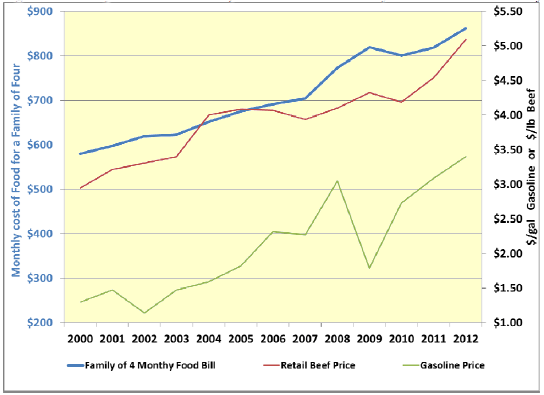



The Bumpy Road of the Beef Market
Uncertainty is something the beef industry continuously faces and lately there have been some sudden dips and turns in the road, writes Shane Ellis from teh Iowa State University Department of Economics in the Iowa Farm Outlook.Two months ago misinformation about lean fine textured beef was propelled through the enormous influence of social media.
The negative influence of that misinformation led to the partial shutdown a vital portion of the beef processing sector. While efforts to inform consumers and displace negative sentiments have been effective it will still take time for things to return to “normal”.
Recently another case of atypical bovine spongiform encephalopathy (BSE) was identified in a California dairy cow.
How this new case will impact domestic demand has yet to be fully seen, but this time it is a back page news item instead of a front page headline.
Consumers have seen news of BSE before and the negative impact on purchasing decisions soon dissipated. A similar recovery of demand should happen again.
As we observe the cattle beef markets behavior, it is easy to see that other commodities have some different price responses to emerging events and information.
A crop planting report can immediately move the corn futures market up or down the daily limit. Political unrest in a foreign oil exporting nation can make fuel prices spike literally overnight.
Most of the 2012 cattle futures contracts moved the limit down on the rumor of the recent BSE case.
How often do cattle futures prices move up the daily limit because of a cattle report or beef imports from South America were interrupted?
The US beef industry is built on the fundamentals of supply and demand, and because most of our nations beef supply is produced and consumed domestically there tends to be less uncertainty in the supply of beef or where the beef will be utilized.
Cattle prices were getting stronger in the first two months of this year on the prospects of tighter cattle and beef supplies during 2012, but when consumer demand started to sway under weaker consumer confidence and record high beef prices at the meat counter, cattle prices declined and then steadied.
So what are our prospects for the rest of the year?
Consumers are cautious and not likely to build demand until there are better signs of economic recovery. Whether they are looking at the price of gas at the pump, domestic employment rates or the global macroeconomic outlook, there is not enough good news to build consumers’ confidence.
Until there are better signs of the economy improving we will not see cattle prices making any improvements. The troubling part is that there is still room for the price to decline further.
The 5-area weighted average cattle price is still at a record high for the last of week of April, and was not quite enough to keep cattle finishing easily profitable.
Consumers’ confidence can also be built and diminished when disposable buying power is compared with the cost of goods available for purchase.
In the past two years the cost of food and fuel has increased at an accelerated rate.
Figure 1 compares the average price of retail beef with the cost of gasoline and the monthly cost of food for a family of four on a moderate cost food plan during the month of January over the past decade.
Consumers enjoyed a fairly steady retail price for beef from 2003 to 2010.
In the past two years, retail prices of beef have been moving higher as the cost of producing beef and steady to stronger demand pushed prices high.
The general cost of food has also been increasing faster than usual in the past two years, but the increase in the cost of beef has been more pronounced.
This increased cost of essential goods compared to the dismal growth in average income leaves many consumers with an increased sensitivity to how they spend their money.
Ultimately we are reminded of just how sensitive the beef and cattle market can be to the economy.
The unexpected bumps in the road can and will have a negative impact on the cattle market in the short run, but long term strength depends on the growth of economy and consumers having enough disposable income to spend comfortably.
January Retail Price of Beef, Gasoline and the Monthly Cost of Food for a Family of Four

May 2012


